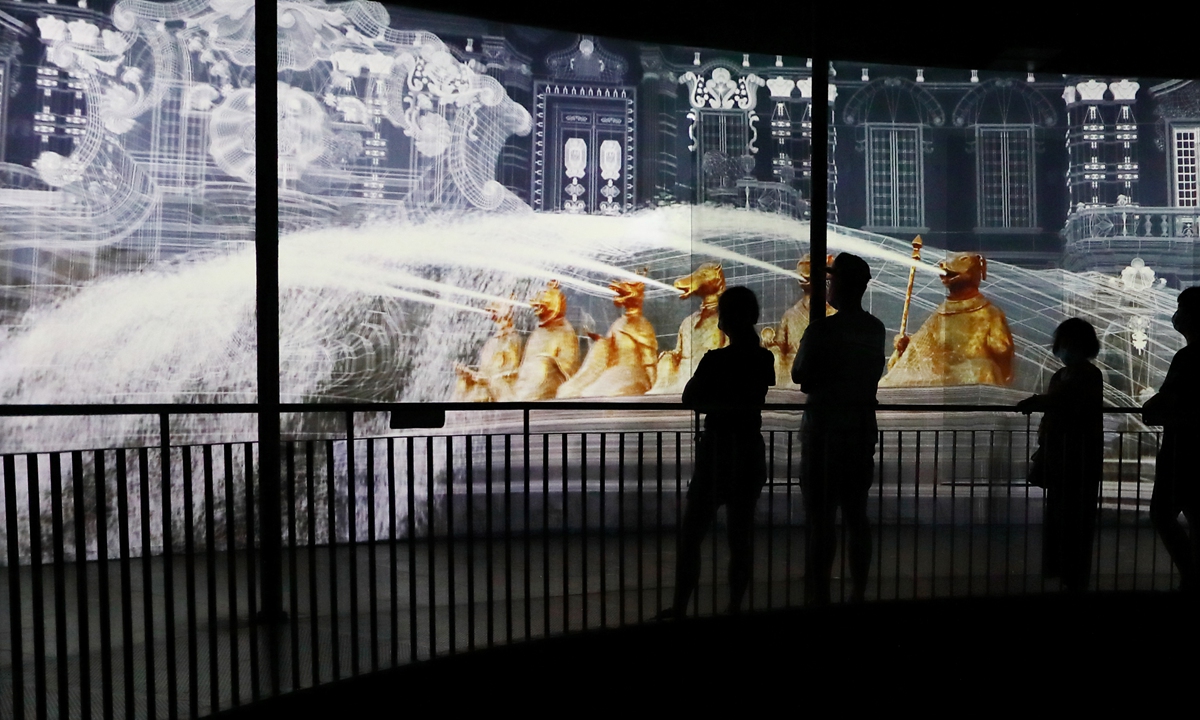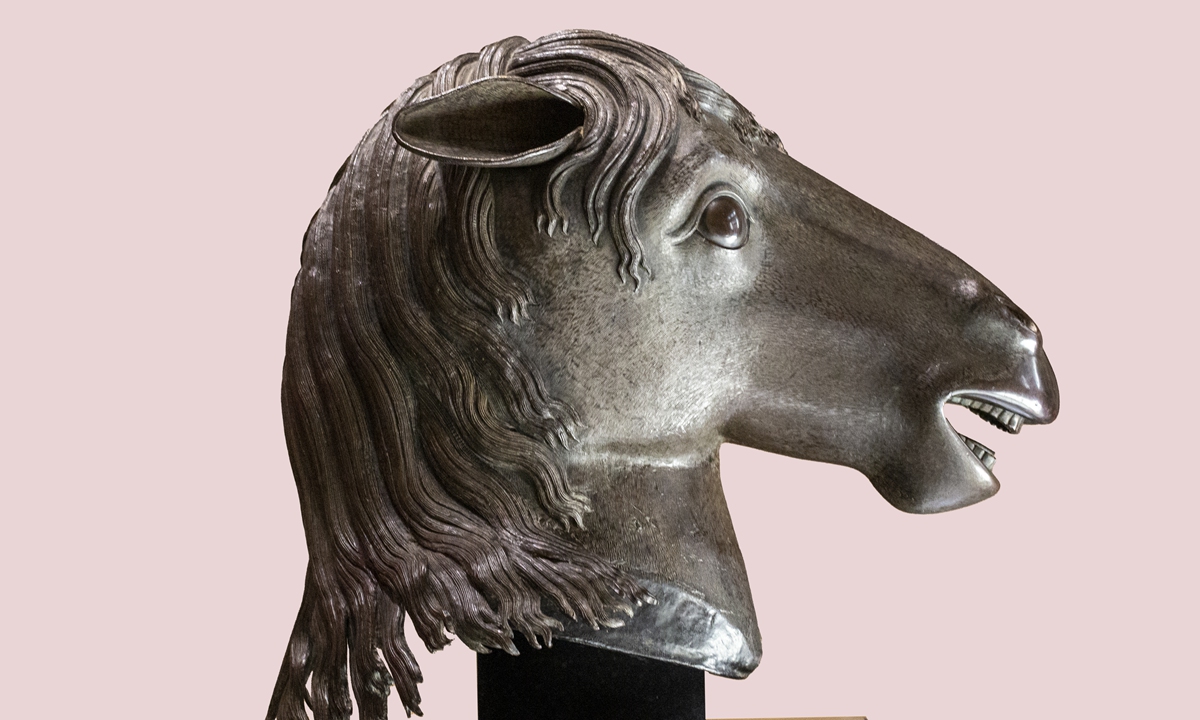
People look at a digital recreation of an Old Summer Palace fountain featuring 12 bronze Chinese zodiac statues at an exhibition held in Beijing in July 2020. Photo: VCG

A bronze Chinese zodiac horse head, which was looted from the Old Summer Palace in Beijing in 1860, returned in 2020. Photo: VCG
Editor's Note:
Carrying the genes and spirit of a nation, cultural relics and heritages are irreplaceable resources for a thriving civilization. A huge number of Chinese relics have become more popular over the past 10 years and allowed people from around the world to get to know Chinese culture better. The Global Times will feature a number of these "star" artifacts in this series, to make these cultural relics come alive.
As President Xi Jinping has said, Chinese civilization, together with the colorful civilizations of other countries, should provide mankind with proper spiritual guidance and a strong spiritual impetus.
Today we get to know the 12 bronze Chinese zodiac statues at the Yuanmingyuan (the Old Summer Palace) that were looted and lost overseas 162 years ago. In the intervening years, several of these heads have returned home through the efforts of individuals and government officials. Today, in the age of the internet, Chinese artists have stepped up to reunite a complete collection of these treasures in the virtual world.
After being looted by invaders and scattered around the world for more than a century and a half, 12 bronze Chinese zodiac animal heads have been reunited in the virtual world through the efforts of Chinese artists.
While seven of these heads, including the horse and ox, have been returned to the motherland, the locations of the remaining five - dragon, snake, goat, rooster and dog - are still unknown.
However, overcoming the bounds of reality, Chinese digital artists have turned to digital technology to give these heads a family reunion.
Sold as NFTs (non-fungible token), these digital artworks have been hits online, selling out almost as soon as they debut online.
"Digitalizing cultural relics such as the bronze zodiac heads and integrating traditional culture into the Metaverse can promote the conservation of these national treasures and increase their popularity among the public," Ding Daoshi, a veteran independent analyst in the internet sector, told the Global Times.
Non-fungible tradition
In March 2022, Chinese-Grenadian blockchain entrepreneur Sun Yuchen spent nearly 10 million yuan ($1.45 million) at a Metapoly XM auction to acquire an NFT collection of the 12 Chinese zodiac heads, the only set in global circulation.
The reunion of the cultural relics in the digital world sparked Chinese netizens' excitement as Sun said that he plans to give the public access to the digital image, which can be moved to appreciate the heads from various angles.
A few days later, an NFT picture of the bronze goat head went under the hammer at the online auction Shuzi Baozang (lit: Digital Treasure), finally selling for more than 8,000 yuan.
Some other Chinese artists, including Huang Jiamin and Ji Chu, have also created their own digital images that combine the bronze zodiac heads with elements of modern art.
Focus on creativity
More and more Chinese artists are taking an interest in ways to bring cultural relics such as the bronze Chinese zodiac heads and the public closer together through digital technology.
"I think such digital creativity involving the 12 Chinese zodiac heads can intrigue more people and make them want to understand the history behind these relics. Such relics are like a national business card," Huo Zhengxin, an expert on art repatriation and law professor at the China University of Political Science and Law, told the Global Times.
"Unlike digital solutions for relic conservation, the new Metaverse Chinese zodiac heads focus on 'creativity' and provide people with a window to appreciate the relics," Zhu Yizhong, a digital artist in Wuhan, Hubei Province, told the Global Times on Wednesday.
Zhu explained that aesthetic-wise, the new digital creations should respect the appearance of the original works while also using their imagination to personalize the new creations.
"If I were to create a digital art collection inspired by the Chinese zodiac heads, I would add some Qing Dynasty [1644-1911] ornaments to them to show their historical backgrounds. Also, the fact they were lost overseas is another good starting point for creators to interpret other design elements," Zhu noted.
Zhu also emphasized that relic-inspired digital art can be a catalyst for younger generations to embrace traditional culture as it fits with the concept of "China trends."
"Personally speaking, 80 percent of people who like my digital works were born in the 1990s. Digital cultural consumption and also the digitalization of cultural industries are being embraced by many young Chinese who are even starting to think of Chinese folk culture as a new fashionable trend. This can make more people believe in and want to promote 'China trends,'" Zhu said.





